Slip-resistant tiles have become a crucial feature in bathrooms to ensure safety and prevent accidents caused by wet floors. In Germany alone, approximately 250,000 people suffer injuries in the bathroom each year, highlighting the need for investing in anti-slip flooring options.
These tiles are available in various materials and designs that cater to different interior styles. Their rough surface provides grip and stability, significantly reducing the risk of slipping and falling. Slip resistance classes, ranging from R9 to R13, indicate the safe inclination angle for walking and standing on the tile.

Different areas within the bathroom require different levels of slip resistance, with R10 suitable for high humidity areas like kitchens and bathrooms, and R11 recommended for floor-level showers.
Anti-slip tiles can imitate the appearance of natural stone, concrete, and wood grains, offering both safety and aesthetic appeal. Options such as mosaic tiles with small dimensions and textured surfaces provide additional safety measures.
Ultimately, anti-slip floor tiles are practical, stylish, and essential for creating a safe bathroom environment.
The high incidence of injuries in the bathroom, with approximately 250,000 people being injured annually in Germany alone, underscores the importance of understanding the risks associated with slip and fall accidents in this particular setting.
Preventing accidents in the bathroom is essential, and one way to enhance bathroom safety is by installing slip-resistant flooring options. Anti-slip tiles are a popular choice due to their numerous benefits. These tiles provide a rough surface texture that prevents slipping and falling on wet floors.
Choosing the right tile texture is crucial as it determines the level of slip resistance. By selecting anti-slip tiles, individuals can significantly reduce the risk of accidents in the bathroom, promoting a safer environment for all users.
In analyzing data on bathroom accidents, it is evident that a significant number of injuries occur due to factors such as wet surfaces, inadequate lighting, and obstacles obstructing walkways. Slip and fall accidents in bathrooms can result in serious injuries, making it crucial to prioritize bathroom safety.
Prevention methods include creating a well-lit environment, removing potential tripping hazards, and installing slip-resistant flooring. Slip-resistant tiles play a vital role in reducing the risk of accidents on wet bathroom floors. These tiles have a rough surface that provides traction and prevents slipping. They come in various materials and designs, allowing homeowners to choose a style that complements their bathroom decor.
By investing in slip-resistant tiles, individuals can enhance bathroom safety, reduce the likelihood of accidents, and create a secure environment for all users.
Addressing safety concerns in a bathroom setting, the implementation of slip-resistant flooring options ensures a secure environment for users, mitigating the risk of accidents associated with wet surfaces and inadequate traction.
In elderly care facilities, the benefits of anti-slip floor tiles are particularly evident as they provide stability and reduce the likelihood of falls, which can be detrimental to older individuals.
Proper installation is crucial for the effectiveness of anti-slip floor tiles, as any flaws or errors can compromise their performance.
When comparing the effectiveness of different anti-slip treatments for bathroom floors, factors such as durability, longevity, and ease of maintenance should be considered.
Exploring alternative materials for slip-resistant bathroom flooring is essential to ensure a wide range of options that meet different aesthetic and functional requirements.
Lastly, addressing the maintenance challenges of anti-slip floor tiles in busy bathrooms is crucial to ensure their long-term effectiveness and safety.
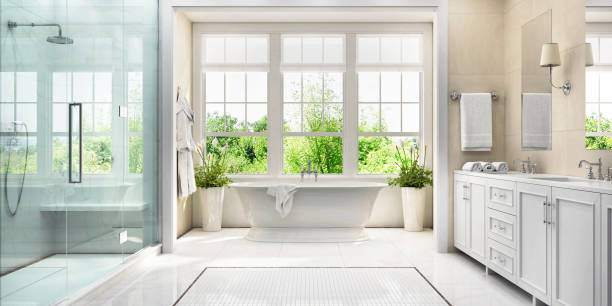
This section will discuss the science behind anti-slip floor tiles in bathrooms, focusing on the concept of Coefficient of Friction (COF).
The COF is a measure of the resistance between two surfaces in contact, and it plays a crucial role in determining the slip resistance of tiles.
Factors such as the texture, material, and design of the tiles can affect the COF and subsequently the safety and traction they provide.
Anti-slip tiles are specifically designed to improve traction by increasing the COF, thereby reducing the risk of accidents on wet bathroom floors.
One crucial aspect to consider when discussing anti-slip floor tiles in the bathroom is the Coefficient of Friction (COF). The COF is a measurement that indicates the slip resistance of a surface. It is essential to choose tiles with a high COF to ensure safety and prevent accidents on wet bathroom floors.
Slip resistance testing methods, such as the pendulum test or the ramp test, are used to determine the COF of tiles. Anti-slip floor tiles offer several benefits, including reducing the risk of slipping and falling, providing safe footing in damp or wet areas, and increasing overall bathroom safety.
To maintain slip-resistant tiles, regular cleaning with non-abrasive cleaners is recommended. Incorporating texture in the bathroom design, such as using mosaic or structured tiles, can enhance the slip resistance while adding visual interest to the space.
Factors such as surface texture, moisture levels, and the presence of contaminants can significantly impact the Coefficient of Friction (COF) of bathroom flooring materials. The COF is of utmost importance in ensuring the slip resistance of tiles in wet areas like bathrooms.
Slip resistance testing methods, such as the pendulum test or the ramp test, are used to measure the COF and determine the safety of the flooring. Textured surfaces on tiles provide increased slip resistance by creating more points of contact with the foot. Additionally, slip-resistant coatings can be applied to further enhance safety.
When choosing tiles for wet rooms, it is essential to consider their slip resistance properties, along with other factors like durability, water resistance, and ease of cleaning. Proper selection of tiles and maintenance can help prevent accidents and ensure a safe bathroom environment.
In the context of slip-resistant bathroom tiles, it is important to understand how anti-slip tiles improve traction. The importance of slip resistance cannot be overstated, as it significantly reduces the risk of accidents and injuries in wet environments.
One of the key factors in enhancing slip resistance is the presence of textured surfaces on the tiles. These textures provide grip and stability, preventing slippage even when the floor is wet.
Additionally, certain coatings can be applied to tiles to further enhance their slip resistance.
When it comes to popular tile materials for anti-slip flooring, options such as porcelain, ceramic, and natural stone are commonly chosen for their durability, water resistance, and slip-resistant properties.
Lastly, it is crucial to consider design considerations for safe and stylish bathrooms, ensuring that the chosen tiles not only provide safety but also complement the overall aesthetic of the space.
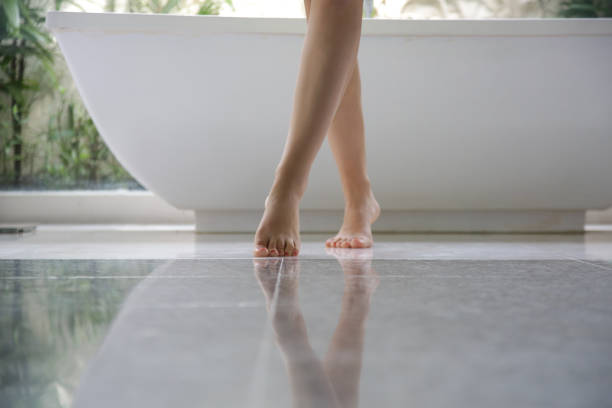
This discussion will focus on different types of anti-slip floor tiles for bathrooms.
Firstly, porcelain tiles with textured surfaces provide grip and stability, making them a popular choice for bathroom flooring.
Secondly, ceramic tiles with slip-resistant coatings offer an additional layer of protection against slipping and falling.
Lastly, natural stone tiles with honed or flamed finishes provide a naturally slip-resistant surface while adding a touch of elegance to the bathroom.
Porcelain tiles with textured surfaces provide enhanced slip resistance in bathroom floors, offering both safety and aesthetic appeal. These tiles have several advantages, including their ability to prevent accidents on wet floors.
The installation process for these tiles is similar to that of regular porcelain tiles, requiring a proper substrate and adhesive. Maintenance tips for textured porcelain tiles include regular cleaning with non-abrasive cleaners and avoiding the use of harsh chemicals.
When considering the cost, textured porcelain tiles may be slightly more expensive than regular porcelain tiles due to their added slip-resistant features. Customer reviews of these tiles are generally positive, with many praising their ability to provide a secure footing in wet areas while still maintaining a stylish look.
Overall, porcelain tiles with textured surfaces are a popular choice for those looking to enhance safety in their bathroom floors.
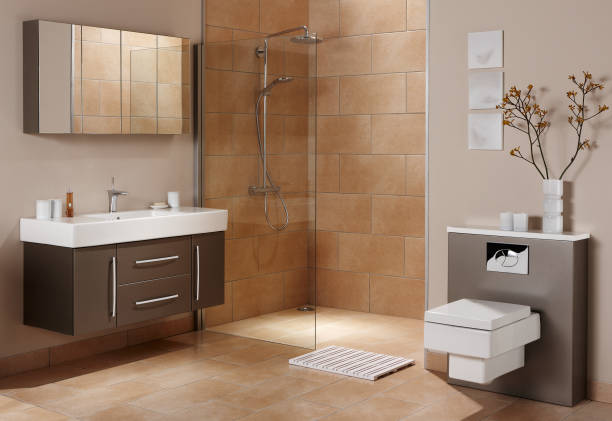
Ceramic tiles with textured coatings offer an additional layer of slip resistance for bathroom floors, ensuring a secure and stable surface even when wet. These tiles provide several benefits, including reducing the risk of accidents and increasing safety in the bathroom.
The installation process for anti-slip floor tiles is similar to that of regular ceramic tiles, with the additional step of applying the slip-resistant coating. Maintenance tips for ceramic tiles with slip-resistant coatings involve regular cleaning with mild detergents and avoiding abrasive cleaning tools that may damage the coating.
When comparing different types of non-slip coatings, it is important to consider their effectiveness, durability, and ease of maintenance. The cost of anti-slip tile installations may vary depending on the type of coating and the size of the bathroom, but it is a worthwhile investment for the safety and well-being of bathroom users.

Moving on from discussing ceramic tiles with slip-resistant coatings, another option for anti-slip bathroom flooring is natural stone tiles with honed or flamed finishes.
Honed finishes offer a smooth and matte appearance, while flamed finishes provide a textured and rough surface. Both finishes have their pros and cons.
Honed finishes are less prone to scratches and show fewer watermarks, but they can be more slippery when wet. On the other hand, flamed finishes offer excellent slip resistance due to their rough texture but may require more maintenance to keep clean.
When considering alternative non-slip bathroom flooring options, it is essential to weigh the aesthetics, slip resistance, and maintenance requirements of different materials. Additionally, there are DIY methods available for increasing slip resistance in bathrooms, such as applying anti-slip coatings or using adhesive non-slip strips.
Regular cleaning and proper maintenance of natural stone tiles in bathrooms are crucial to preserving their appearance and slip resistance.
Slip resistance ratings and standards are crucial considerations when choosing anti-slip floor tiles for a bathroom as they determine the level of safety and suitability for specific areas prone to wet conditions. In public spaces, where the risk of accidents is higher, the importance of slip-resistant flooring cannot be overstated.
Various testing methods are used to assess the slip resistance of floor tiles, including the pendulum test, the ramp test, and the oil-wet ramp test. These tests measure the dynamic coefficient of friction, which indicates the tile's ability to provide traction and prevent slips.
Textured surfaces in anti-slip tiles play a significant role in enhancing slip resistance by increasing friction between the tile and the user's footwear. Furthermore, advancements in anti-slip coating technology have led to the development of more durable and long-lasting solutions.
When comparing different materials for anti-slip bathroom flooring, it is essential to consider factors such as durability, water resistance, and ease of cleaning. Ultimately, selecting floor tiles with appropriate slip resistance ratings and adhering to established standards is vital to ensure the safety of bathroom users.
Enhancing safety in wet environments necessitates careful consideration of specific requirements for a space dedicated to personal hygiene. In addition to slip-resistant flooring, other factors must be addressed to minimize the risk of accidents in bathrooms.
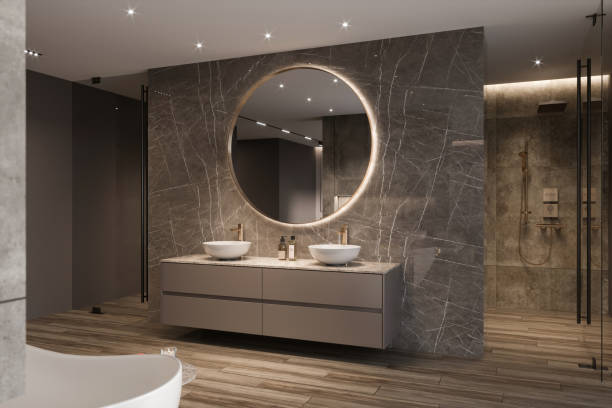
Proper lighting is crucial to ensure visibility and reduce the chances of slips and falls. Waterproofing solutions, such as sealing joints and surfaces, prevent water damage and make the bathroom more resistant to slips. Non-slip alternatives for bathtubs, such as adhesive mats or strips, provide additional traction and stability. Slip-resistant accessories, like grab bars and handrails, offer support and aid in balance while using the bathroom.
DIY methods for improving bathroom safety include applying non-slip coatings to surfaces, installing textured floor tiles, and using bathmats with suction cups. By considering these bathroom-specific requirements and implementing appropriate measures, safety can be significantly enhanced in wet environments.
Tile size, shape, and pattern options play a significant role in creating a visually appealing and safe bathroom environment. When choosing tiles for the bathroom, it is important to consider the benefits of different tile shapes.
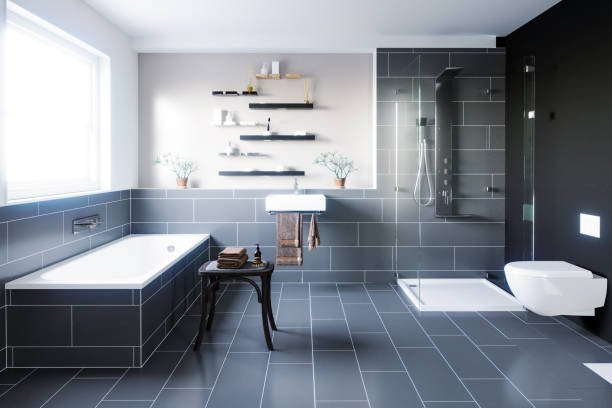
For small bathrooms, opting for larger tiles can create an illusion of spaciousness, while mosaic tiles can add texture and visual interest.
Additionally, it is crucial to compare the durability of different tile materials. Porcelain and ceramic tiles are known for their water, stain, and scratch-resistant properties, making them ideal choices for bathroom floors.
When it comes to shower floors, incorporating anti-slip features is essential to prevent accidents. Textured tiles or tiles with a higher slip resistance class, such as R11, are recommended for shower areas.
Lastly, exploring creative tile patterns can add a unique touch to bathroom floors, with options ranging from geometric designs to intricate encaustic tiles.
Maintaining and cleaning the flooring in a bathroom requires regular attention to ensure its longevity and cleanliness.
When it comes to anti-slip floor tiles, it is important to use the best cleaning products that are specifically designed for these types of tiles. These products are formulated to effectively remove dirt, grime, and stains without compromising the slip-resistant properties of the tiles.
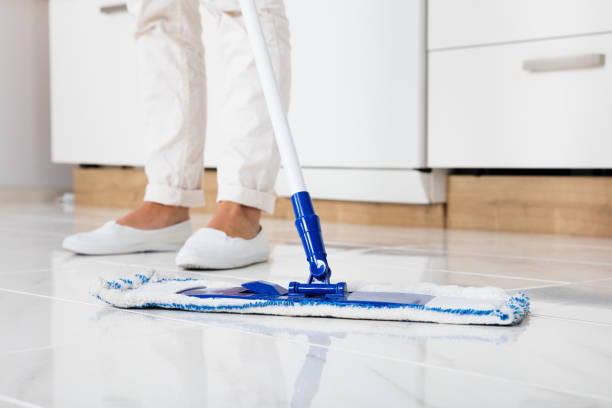
It is recommended to clean anti-slip floor tiles at least once a week to prevent the buildup of dirt and grime. Regular sweeping or vacuuming can help remove loose debris, followed by mopping with a mild detergent or a specially formulated cleaner.
For stubborn stains on anti-slip floor tiles, it is advisable to use non-abrasive cleaning methods. This can include using a paste made of baking soda and water, or a mixture of vinegar and water. Gently scrubbing the stained area with a soft brush or sponge can help lift the stain without damaging the tiles.
In some cases, deep cleaning may be necessary for heavily soiled tiles. DIY methods for deep cleaning can include using steam cleaners or hiring professional maintenance services. Professional services often utilize specialized equipment and techniques to thoroughly clean and maintain the anti-slip floor tiles, ensuring their longevity and slip-resistant properties are preserved.
Color and visual contrast play a crucial role in creating a safe and visually appealing bathroom environment with anti-slip floor tiles. When it comes to safety, proper lighting is essential as it enhances visibility and reduces the risk of accidents. Additionally, choosing the right grout color is important as it can provide a visual contrast between the tiles, making it easier to distinguish their edges and preventing tripping.

Incorporating contrasting textures on the floor can also help improve safety by providing tactile cues and better grip. Installing handrails and grab bars near the bathtub, shower, and toilet area further enhances safety, especially for individuals with limited mobility. Lastly, for existing tiles, non-slip coatings can be applied to provide an extra layer of protection against slips and falls.
Utilizing borders and decors in the design scheme of a bathroom can enhance both the safety and visual appeal of the space.
When it comes to anti-slip floor tiles, incorporating borders and decors can provide several advantages. Textured tiles, for instance, offer improved slip resistance due to their rough surface, minimizing the risk of accidents on wet floors. Additionally, innovative slip-resistant designs are available, allowing homeowners to choose from a wide range of patterns and styles that can complement their bathroom aesthetics.

During installation, it is important to follow the manufacturer's instructions to ensure proper placement and maximize the tile's slip-resistant properties.
To maintain non-slip flooring, regular cleaning and avoiding the use of harsh chemicals are recommended.
Overall, utilizing borders and decors with anti-slip tiles not only increases safety but also adds a visually appealing element to the bathroom design.
One way to enhance the functionality and aesthetic appeal of a bathroom design is through the strategic arrangement of tiles, allowing for creative layout ideas that optimize the space.
Innovative patterns can be incorporated into the tile arrangement, adding visual interest and uniqueness to the bathroom.
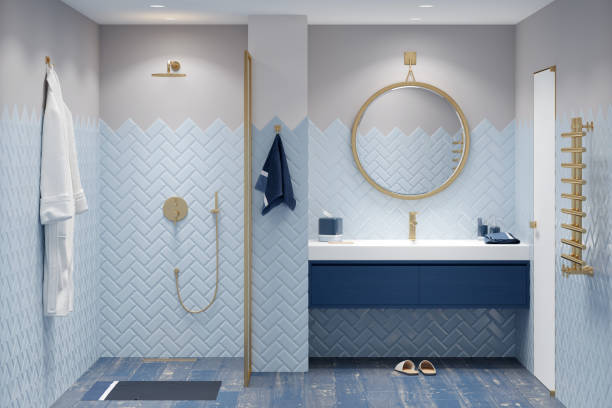
Space-saving designs can be achieved by using smaller tiles or arranging them in a herringbone or chevron pattern, maximizing the available space.
Sustainable materials, such as recycled glass or bamboo tiles, can be utilized to create an eco-friendly bathroom.
Customizable options, such as mosaic tiles or patterned tiles that can be mixed and matched, offer endless possibilities for personalized designs.
Additionally, budget-friendly solutions like vinyl or ceramic tiles provide cost-effective alternatives without compromising on style or functionality.
By incorporating nonslip rugs and mats into the design scheme, the bathroom becomes a safer space with added traction and stability for users.
The benefits of incorporating rugs in the bathroom are numerous. They provide an extra layer of protection against slips and falls, especially when placed near the bathtub, shower, or toilet.

When choosing materials for bathroom mats, it is important to select ones that are water-resistant and have a nonslip backing. Rubber and vinyl mats are popular choices due to their durability and excellent grip. Stylish rug options for a non-slip bathroom include woven bamboo mats, microfiber bath rugs, and plush cotton mats with a latex backing.
1.Can anti-slip tiles be used for shower floors?
One important consideration when selecting anti-slip tiles for bathroom flooring is their suitability for shower floors. Using anti-slip tiles in shower areas brings several benefits, including increased safety and reduced risk of accidents due to their slip-resistant properties.
When comparing different types of anti-slip tiles for shower floors, it is important to consider their slip resistance class, with R10 being suitable for high humidity areas like bathrooms and kitchens. Installation and maintenance of anti-slip tiles in showers require proper sealing to ensure water resistance and longevity.
Customer reviews and experiences with anti-slip tiles in shower applications can provide valuable insights into their performance and durability.
Design ideas for incorporating anti-slip tiles in shower spaces include using mosaic tiles to create textured surfaces and combining different colors and patterns for a visually appealing shower area.
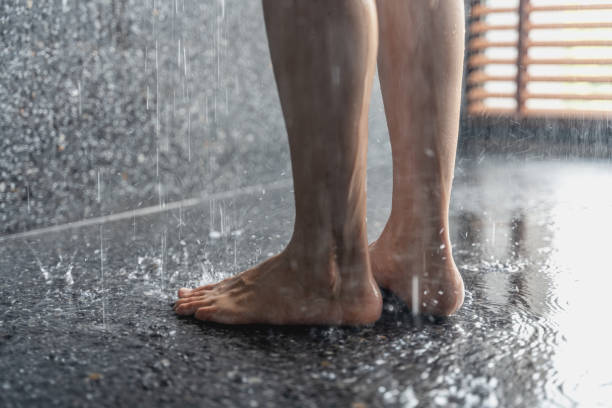
2.Are anti-slip tiles suitable for commercial bathrooms?
Suitable for high-traffic and public restroom facilities, slip-resistant surfaces provide a secure environment that instills confidence and ensures the safety of all individuals. When it comes to commercial bathrooms, using anti-slip tiles offers numerous benefits.
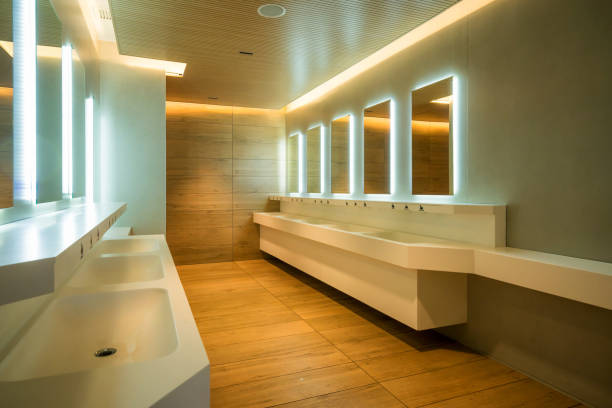
Firstly, these tiles reduce the risk of accidents by providing a stable and slip-resistant surface, even in wet conditions. They are also highly durable and can withstand the heavy foot traffic typically found in commercial settings. Additionally, anti-slip tiles are available in a variety of materials, allowing for customization to fit any design aesthetic.
Maintenance of these tiles is relatively easy, requiring regular cleaning with non-abrasive, non-slip cleaning products. Case studies have shown successful installations of anti-slip tiles in commercial bathrooms, with positive customer reviews and feedback on their effectiveness in preventing slips and falls.
Overall, anti-slip tiles are a reliable and practical choice for ensuring safety in commercial bathroom environments.
3.Do anti-slip tiles compromise on style?
In considering the suitability of anti-slip tiles for commercial bathrooms, it is important to address the potential compromise on style. However, it is worth noting that modern anti-slip tiles have come a long way in terms of design, offering a wide range of options that successfully balance safety and aesthetics.
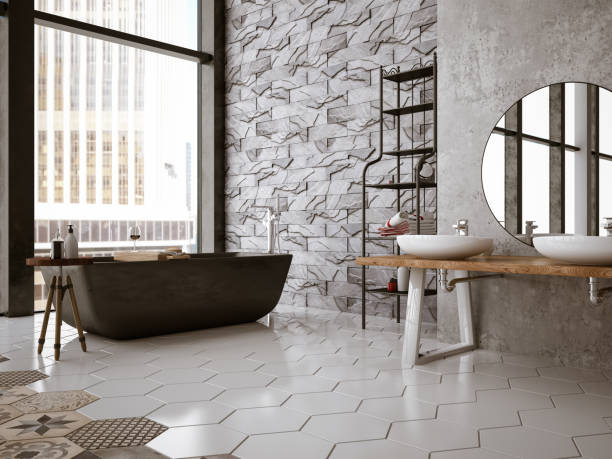
When it comes to creating a slip-resistant bathroom, design tips can be implemented to enhance the overall look. Incorporating non-slip rugs can provide additional safety measures while adding texture and warmth to the space. Utilizing borders and decors creatively can add visual interest and highlight certain areas. Furthermore, color and visual contrast can be used effectively in anti-slip bathrooms to create a visually appealing environment.
By carefully selecting the right tiles and incorporating these design elements, it is possible to achieve a stylish and safe bathroom space.
4.What is the least slippery flooring in bathroom?
The flooring material that provides the highest level of slip resistance in wet bathroom conditions is porcelain stoneware. Porcelain stoneware tiles are known for their excellent anti-slip properties, making them the ideal choice for bathroom flooring.
When selecting non-slip tiles for your bathroom, it is important to consider the slip resistance class. For most home bathrooms, a class R10 tile is sufficient, while a class R11 is recommended for areas that are frequently wet.
Installing anti-slip floor tiles in the bathroom can be done as a DIY project with some careful planning and preparation. Regular maintenance and cleaning are essential for preserving the slip-resistant properties of the tiles. It is also worth comparing the cost and durability of different types of anti-slip tiles to find the best option for your bathroom.
5.Is porcelain tile too slippery for bathroom?
Porcelain tile, known for its smooth and glossy surface, may pose a potential risk of slipping in a bathroom due to its lack of inherent slip resistance.
However, there are ways to make porcelain tiles less slippery and suitable for bathroom use. One option is to choose porcelain tiles with a textured surface, such as those with a slightly raised pattern or a matte finish. These textured surfaces increase the coefficient of friction (COF) of the tiles, providing better traction and reducing the risk of slipping.
Additionally, considering slip resistance in natural stone can be a good alternative to porcelain tiles. When selecting anti-slip tiles for the bathroom, it is important to consider factors such as slip resistance ratings, maintenance requirements, and the specific needs of the space.

Anti Slip Tile Blog Series:
Non Slip Ceramic Tile For Bathroom-10 Ideas And Guides
Porcelain Anti Slip Floor Tiles China
Anti Slip Porcelain Garden Tiles
Favorable Anti Slip Floor Tiles Price At Sunvin Ceramics
Anti Slip Floor Tiles for Wet Rooms
Non Slip Floor Tiles For Living Room
Anti Slip Ceramic Floor Tiles Commercial
Anti Slip Rating Tiles∣Your Essential Guide 2023
Non Slip Floor Tiles For Commercial Kitchen
Anti Slip Floor Tiles Commercial
Anti Slip Floor Tiles For Kitchen
In conclusion, anti-slip floor tiles play a crucial role in enhancing safety and preventing accidents in bathrooms. With a wide range of materials and designs available, these tiles offer both functionality and aesthetic appeal.
The slip resistance classes indicate the safe inclination angle for walking and standing, ensuring the appropriate level of safety for different areas.
Considering factors such as slip resistance, durability, and maintenance requirements is essential when choosing anti-slip floor tiles.
By striking a balance between safety and aesthetics, these tiles can transform bathrooms into safe and stylish spaces.
At Sunvin Ceramics, we take pride in delivering top-quality tiles that combine functionality with style. Our extensive experience in the industry has allowed us to refine our products to meet the highest standards of durability and safety.
When it comes to non-slip floor tiles, Sunvin Ceramics is your trusted partner. Contact us today to explore our exceptional range of tiles and experience the quality and professionalism that sets us apart from the rest. Let us help you transform your space into something extraordinary!